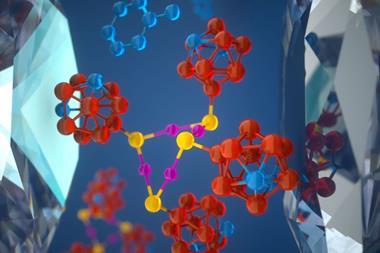Mechanical manipulation of molecules can induce chemical reactions. Now, researchers at the Ruhr University Bochum, in Germany, have calculated that enediyne toxins, compounds used as anticancer drugs, might undergo Bergman cyclisation when put under stress.
Dominik Marx and colleagues calculated that when mechanophores, analogous to chromophores, are incorporated into a structure they can cause a chemical change when a mechanical force is applied, rather than when light shines on them. They have looked at the mechanophore effect in highly toxic anticancer agents that undergo Bergman cyclisation to ultimately release active 1,4-didehydrobenzene diradicals that cleave DNA and kill cancer cells. Their calculations suggest that an applied force of as little as one or two nano-Newtons can deform the molecular structure sufficiently into a shape closer to the transition state for the reaction and so nudge it towards cyclisation.The concept of mechanophores, responsive units within a chemical structure that change under mechanical stress and induce a chemical reaction, was first demonstrated practically in the mid-2000s. However, controlling a particular reaction and fine tuning the behaviour of mechanophore-containing reactants has yet to be fully realised. The potential lies in the fact that the reactions might be pushed, or pulled along, by putting the mechanophores under stress at room temperature by, for instance, using sound energy, avoiding the need to heat it.
Marx and colleagues calculated the electronic structures as a function of constant external force and found that nanoscopic structural changes can be induced by nano-Newton forces sufficient to lower the reaction energy barrier. Their approach allowed them to impose well-defined mechanical forces in these calculations in order to obtain not only the transition states but also full reaction pathways. This is, in contrast to conventional parameterised calculations, mostly used to investigate mechanical processes. The calculations also reveal that there might be a tipping point, a diagonal pulling direction that exists in certain mechanophore-modified enediynes that unexpectedly raises the activation energy rather than lowering it. Their explanation assumes that the pulling force in this analogue is such that the molecule is distorted into a state further from the transition state.
‘The results raise two important challenges for synthetic and computational chemists,’ says Roman Boulatov of the University of Liverpool, UK. ‘Is it possible to tweak the structure of the mechanophore to bring the threshold force at which the reaction occurs within the range of physiologically relevant forces? And, how to demonstrate experimentally that stretching a molecule can sometimes suppress its fragmentation, rather than accelerate it.’ He adds that devising experiments to demonstrate the counterintuitive effects that arise from such theoretical work is a major challenge in polymer mechanochemistry.








No comments yet